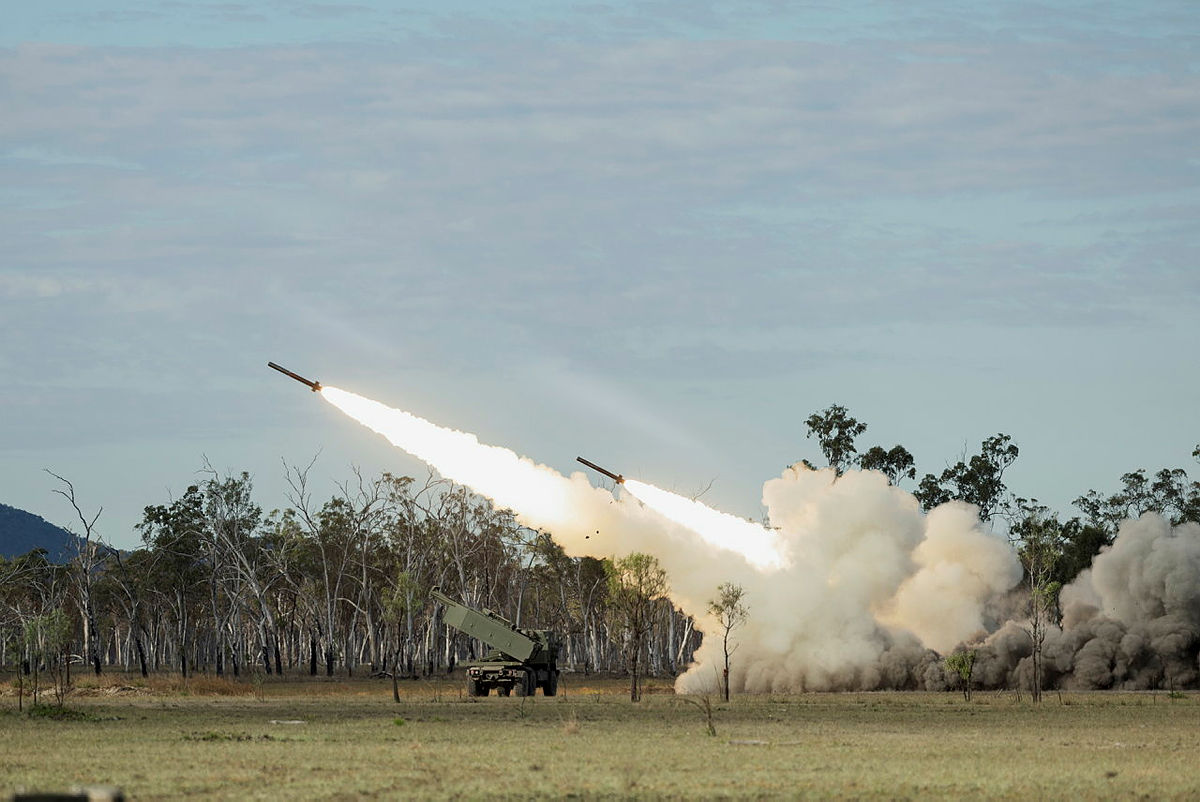
The 2023 defence strategic review has as its centrepiece the concept Defence Minister Richard Marles has defined as ‘impactful projection’. The goal is to defend Australia and its immediate region, and to ‘deter through denial’ any attacker’s attempt to approach through the archipelago to the nation’s north. This requires Australia to be able to precisely strike targets at long range and to manufacture munitions in Australia. That will complement the acquisition of nuclear-powered, conventionally armed submarines under the AUKUS agreement, and the development of infrastructure to enable Australia and its allies to operate more easily from bases in northern Australia.
The capabilities identified in the 2023 review and the 2020 force structure plan provide this increased range and ability to deter. The review recommends local manufacture of missiles, though the new guided weapons and explosive ordnance enterprise won’t start producing for some time.
But is this sufficient for Australia’s security in a much more contested strategic environment, when weapons of potential adversaries significantly out-range planned Australian capabilities?
The reality is that the recommendations won’t give the Australian Defence Force the ability to reach far enough beyond Australia’s shores to strike an enemy, at least not within the critical decade to come. The ADF needs longer-range capabilities faster or, failing that, a clear forward deployment strategy.
The review certainly elevates the army’s role in long-range strike, with the HIMARS missile launcher, which had been planned for acquisition in 2022, as well the development of the precision strike missile, first announced in 2021. HIMARS can fire ATACMS battlefield rockets, with a range of 300 kilometres, and precision-strike missiles, with a current range of about 500 kilometres. That’s a significant leap beyond the army’s towed artillery or the self-propelled artillery based on the Korean AS9 Huntsman, which can fire out to 30 kilometres.
But compared to the long-range capabilities of China’s military, the weapons coming to Australia are effectively short-range. Missile systems such as China’s DF-26 and DF-27 and sea- and air-based land-attack cruise missiles have the range to hit critical facilities in northern Australia from as far away as the South China Sea. But even with the planned new capabilities, Australian forces wouldn’t be able to place an attacking force at risk until it was well within the ADF’s anti-access and area-denial envelope set to emerge in coming years.
ASPI’s Alex Bristow and Marcus Schultz note that acquiring longer-range weapons, such as land-based anti-ship missiles, and the craft to manoeuvre in littoral areas equips the army for operations along Australia’s vast northern coastline and, potentially, in forward locations in the archipelago.
Unless the army receives missiles with much greater range, it will need to operate to the north of Australia, which will require the agreement of host nations. While there’s been concern in the army about the reduced number of infantry fighting vehicles it will receive, its enhanced role in littoral manoeuvre and its long-range weapons make it a key to delivering the sought-after impactful projection. But more needs to be done to extend the range of proposed land-based missiles.
The air force faces a similar range challenge. The review suggests fitting the AGM-158C long-range anti-ship missile to the F-35A joint strike fighter and acquiring the Kongsberg joint strike missile. The air force earlier announced plans to upgrade its AGM-158 JASSM to the much longer range JASSM-ER for its F/A-18F Super Hornets and potentially the F-35A. The air force is certainly enhancing its lethal reach, but without assured forward host-nation support, its range is still well short of where an attacking force might concentrate.
The navy’s planned acquisition of Tomahawk Block IV and Block V missiles, which can attack both maritime and land targets, will give its air warfare destroyers greater capability, but that will be severely constrained by the limited number of vertical launch cells able to accommodate them. This will also reduce the navy’s ability to sustain a fleet-integrated air and missile defence capability.
The review suggests that the AUKUS submarines can provide an adequate strike capability, but the first won’t turn up until 2033 at the earliest. As ASPI’s Jennifer Parker has noted, any suggestion that submarines diminish the requirement for a potent surface naval capability, including for strike operations, is open to challenge. With only three to four boats available at any time, the ability to generate significant firepower even with advanced missiles such as Tomahawks is constrained.
The lead-up to the 2024 national defence strategy will be a crucial period that includes the release of the review of the navy’s surface fleet requirements. This represents an opportunity for the ADF to embrace a new approach to power projection that fully exploits the unconstrained environment of the oceans, the air and space domains, and the undersea domain.
The ADF should seek to forward deploy well into these maritime regions. As Euan Graham noted last year, one possible option for closer defence cooperation would be the Philippines.
Once naval forces have control of the sea to our north, amphibious land forces can strike and limit an enemy’s ability to manoeuvre.
Littoral forces deployed ashore can be supported where possible by Australian-based US long-range bombers that can undertake land strike and anti-surface warfare, and by well-dispersed and well-armed naval surface combatants including stealthy high-speed missile-armed craft; armed autonomous systems in the air, on the sea and under the waves; and advanced loitering munitions.
The surface fleet review represents an opportunity to reconceptualise how the navy might function in war, shifting to a fleet emphasising stealth, speed, surprise and firepower across a larger number of platforms operating as a networked whole linked by a mix of space- and air-based systems.
If the review merely reaffirms the existing fleet structure and fails to take advantage of new technologies and new operational concepts, it will be a wasted effort and a waste of time—and time in this adverse strategic context is not a friend.

